This is a guest post by Jignasa a.k.a Jigu Patel
Some Birds Live to Eat or Die Eating
I have been observing birds for a while now. Each individual has a unique personality. Some more careful, like my mother, while others are wild, like my best friend. Some are always chirpy like my boss, while some may be moody like my flatmate. When I watch birds, stories unfold in my head, all too human, but somehow much better.
I was in Great Nicobar when I decided I would take up eBird’s checklist-a-day challenge. It was December 2019. We were following a troop of Nicobar Long-tailed Macaques for a project, my newly-converted-into-a-birdwatcher friend, Ashvita Anand, and I. “Jigu, come here,” she called in hushed tones. While the monkeys snoozed in a temple, I followed her gaze and saw a Cinnamon Bittern, basking in the sun in all its glory. There is joy in watching birds you have seen before, only this time, in the perfect light. This individual seemed content like they decided to quit their day job to laze in the sun. I continued birdwatching every day for at least 15 minutes ever since.
Somewhere towards the end of February 2020, I was back home in Vadodara. The news of a worldwide pandemic was out and about. Ashvita and I cribbed about being indoors but discussed birds around the home with glee. “All I see is Red-whiskered Bulbuls. Do you count pigeons as well?” she would ask. “Guess what I sawww!” I would say, ignoring her questions every time.
On 23rd May 2020, I was on the rooftop, and I see this greenish myna-like bird hopping in 2-3 inches high grass, in the plot behind my house. I picked up my binoculars and saw a bird I had never seen before in my life! It was, what birders call, a ‘lifer’ for me. My hands shaking with excitement, I tried to get a photo for record, with my digital camera aligned to the binocs! I had no friends to quietly yell (that’s how birdwatchers yell, no?) and share my moment with. I got a few blurry pictures which eBirders would rate as -1 if they could :))
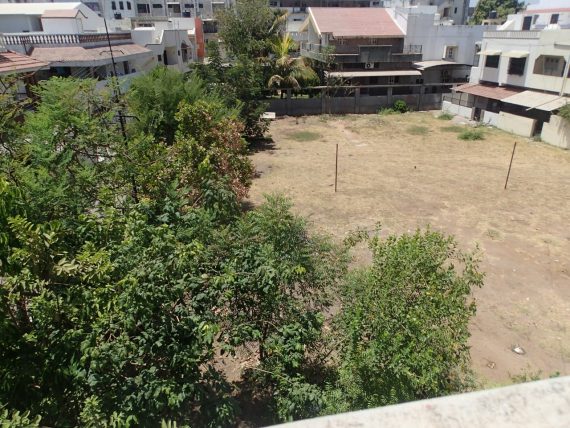
The common plot behind my home, from the rooftop

A blurry picture of my lifer
I ran downstairs, observed the bird from my compound wall, and even showed it to my parents. Then I went out in the plot, sat for over an hour – unmoving, digicam aligned, while this bird hopped closer until my binocs went out of focus. A personality formed in my head – here is a bird that doesn’t mind the neighbour birds but may not want to interact just yet. It simply hopped, observed, tasted the food, and repeat. Finally, it flew off, no thanks to a stray pup that wandered in.
“Oh, my heart! A lifer in my backyard, that too an Indian Pitta, and in the lockdown! You know how many times I have heard this bird and not seen it?! I went to Tamil Nadu and never saw it. Now it is here!” I yelled over the phone to Ashvita much later. Indian Pittas are fairly common in certain areas in southern India in the winter. I knew, in the summer, they are known to breed in Gujarat as well. “Bang in the middle of the city. Can you believe it?!” I texted her again. After tweeting about it and going mad with happiness, I calmed down. I looked up where this bird was sighted in Vadodara and Gujarat, recently and in the past. Exploring on eBird is so cool like that! There are nesting records from people’s backyards as well!
The next morning, I saw it again, from the rooftop. This Indian Pitta was in my backyard for the next 11 mornings! I imagined this one had come from Tamil Nadu and was unafraid of Gujarati birds. Common Mynas, Brahminy Starlings, Jungle Babblers, Indian Robins, and others kept a watch. The Indian Pitta, only interested in Gujarati food. It opened its wings and did a little ‘get back, you’ if one of the Gujju birds got too close to its food. Maybe, other birds didn’t mind sharing, but they didn’t speak each other’s language. I noticed, when it got disturbed, mostly by stray mammals, it would hop into a neighbour’s garden hedge.
Thrice, I saw it almost getting eaten. Yes! Stray cats. Now, all the Gujju birds gave warning calls, as did the squirrels. They called “Bhaagi Ja.. Uddi Ja.. bilaadeeeee” (Run.. Fly, catttt)… But our Tamil-speaking Indian Pitta was too busy eating all these tasty Gujju snacks. Finally, one day, I didn’t see it anymore.
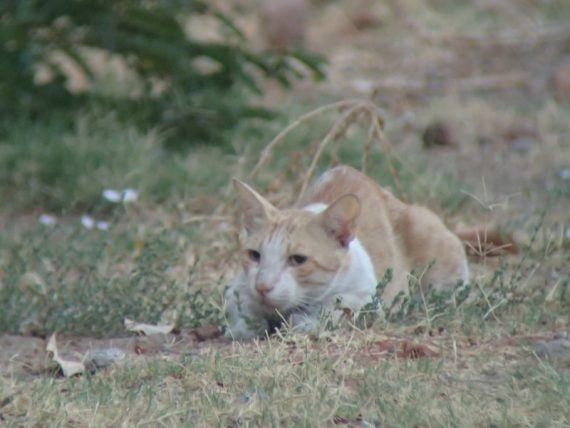
Cat#1 staring at the Pitta
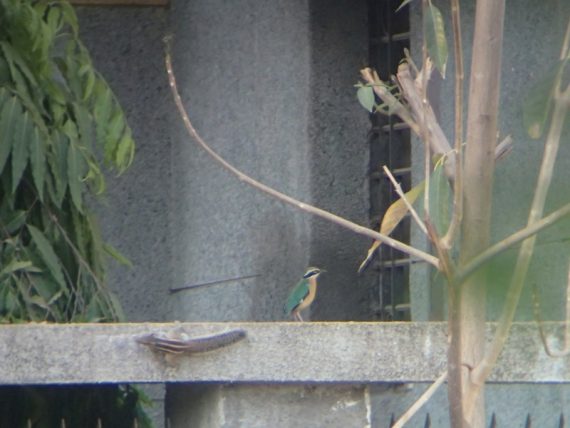
Pitta on my neighbour’s wall
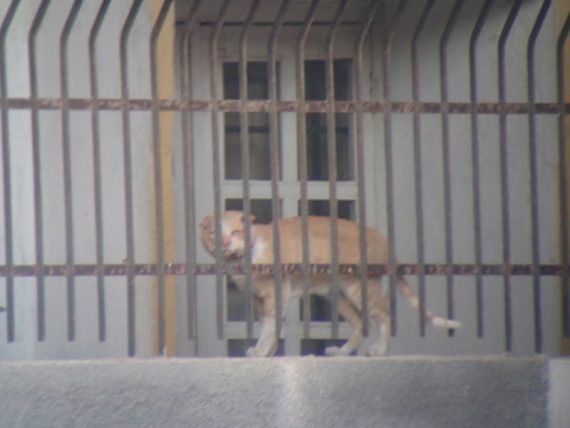
Cat#2 plotting how it would catch the Pitta
Through the lockdown, I went on to sight an on-alert Eurasian Hoopoe; a singer-on-tour with a sore throat, Red-breasted Flycatcher; a live-to-preen Lesser Whitethroat and a stubborn young Bay-backed Shrike, among others in my backyard. The highlight remains our food-loving Indian Pitta.
In May 2021, I was in Tamil Nadu. This time, I was the one, enjoying the food, nodding at the neighbours, not knowing the language :)) “Did it go to your house this year?” Ashvita asked. “I am looking every day. Your bird has not come,” mum said. “Only Gujarati birds this time.. maybe missing their friend from TN” I texted Ashvita. I wonder if it learned a new language in time and flew off to spread messages of delicious snacks or if the cat got its tongue and all.
Some of the incidents and characters in this story are fictitious. Thanks to Nivedita Rao who put the thought of writing about the Pitta to highlight the dangers of not learning new languages, in my head!
Jigu is an amateur birdwatcher who also works to get stories about birds published in the media. If you can write about nature in Indian languages, please get in touch with her through this form. Find her on Twitter. Also, she is looking to learn Tamil if you’re teaching 🙂
Header Image: Bay-backed Shrike Lanius vittatus by Subhadra Devi/ Macaulay Library

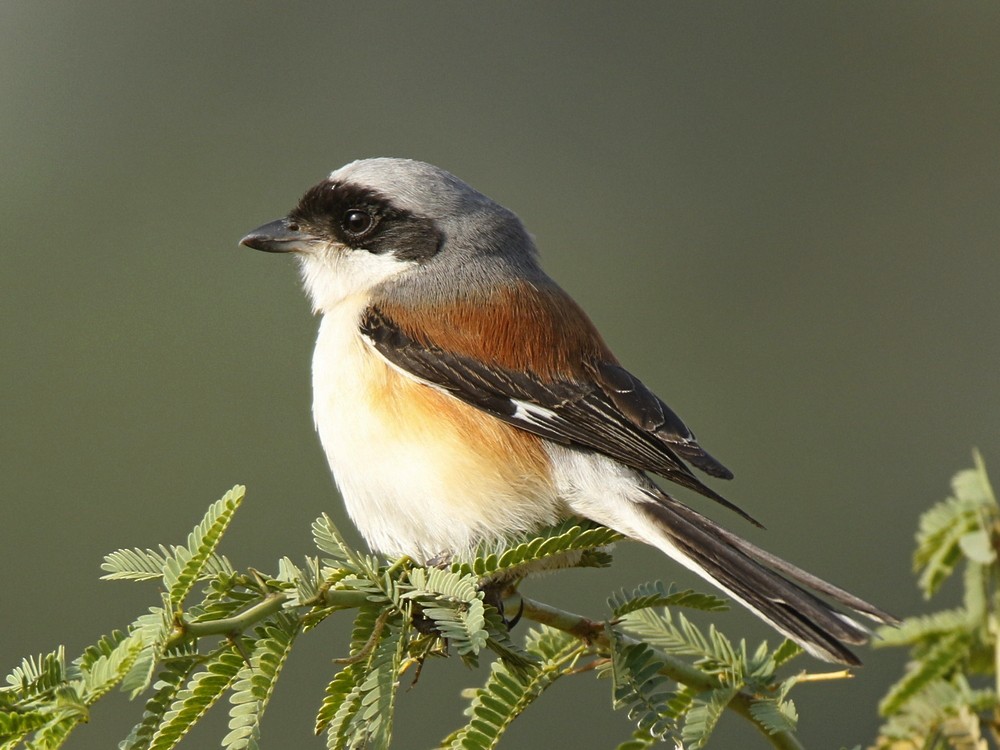
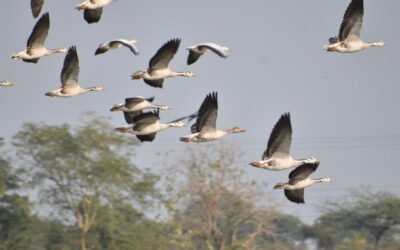
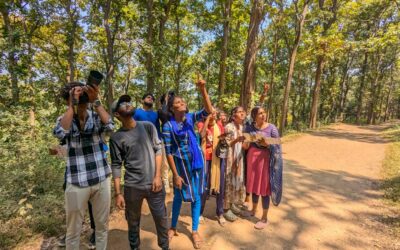

Interesting stuff to read. I’m excited to know more about birding. Keep it up jigu.
hi, loved this write up. I am a budding bird watcher. and have lived in Baroda for 10 years. keep visiting the city still. where do you live in Baroda, if you don’t mind telling?